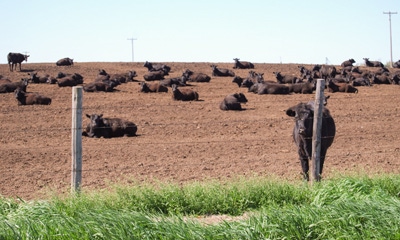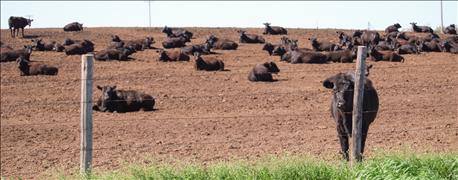
It's been over a decade since Nebraska created its "livestock friendly" designation — a program designed to recognize counties in the state that are receptive to new livestock development. In 2005, Morrill County became the first county to obtain the designation. As of the end of August, 37 of Nebraska's 93 counties have received this designation, with several more under review.
But just how has that designation affected the number of livestock operations in those counties? A recent study by the agricultural economists at the University of Nebraska-Lincoln found that participating counties have gained more cattle farms and lost fewer hog farms than those that lack the designation.

BENEFIT OF LFC: A recent study by the ag economists at UNL found that counties designated as livestock-friendly have gained more cattle farms and lost fewer hog farms than those that lack the designation. However, a number of factors are at play, and it's difficult to say whether or not the designation was the cause for these numbers.
The study was written by Brian Mills, who studied the livestock-friendly designation as his master's degree thesis and is now studying for a doctorate in ag economics at Oklahoma State University, and UNL ag economics professors Azzeddine Azzam, Kate Brooks and David Aiken. The study will appear in the Online Journal of Rural Research and Policy.
The economists studied 21 counties that achieved the designation between 2002 and 2012, comparing the numbers of farms reported in the 2002, 2007 and 2012 censuses.
In raw numbers, counties with the livestock-friendly designation saw larger growth in cattle operations — a 12% increase in livestock-friendly counties between 2007 and 2012, compared to an 8% increase in counties without the designation. More than three-fourths of counties (16 of 21) with the livestock-friendly designation saw a net increase in their cattle farm numbers.
Although most Nebraska counties saw a decline in the number of hog farms during the study period, the decline was significantly slower in counties designated as livestock-friendly. From 2007 to 2012, there was a 15.6% decline in the number of hog farms in participating counties. For counties without the livestock-friendly designation, the decline was 62%. Five counties in the Panhandle — Scottsbluff, Box Butte, Deuel, Morrill and Garden — saw increases in the number of hog operations, all of which had been designated as livestock-friendly.
However, a number of factors are at play, and co-author and thesis co-adviser Azzeddine Azzam, notes the study's conclusions are more nuanced than the raw numbers show.
"Naturally, sometimes people tend to look at before and after to draw a conclusion of causation," says Azzam. "If people look at hog farm numbers and say they declined, you can't point the finger at the livestock-friendly designation and say it didn't work. You also can't look at cattle numbers and say the livestock-friendly designation is entirely responsible for the increase."
Other factors included:
• population density
• per capita income levels
• cattle and hog prices
• corn prices
• presence of a meatpacking plant in the county or a neighboring county
• presence of an ethanol plant in the county or a neighboring county
• concentration of livestock in the county, as measured by cattle per square mile and by percentage of the state's total cattle inventory
• population density of the county
• county's geographic region of the state
• number of years a county has been in the livestock-friendly program
The study did not review farm sizes or zoning regulations. Regression analysis showed the livestock-friendly designation had a stronger positive correlation to livestock expansion than almost all other factors measured.
"After we account for all these things, farms entering or exiting the business, it really is clear and statistically significant at a reliable level that those with the livestock-friendly designation saw an improvement over those without," says Azzam, noting correlation doesn't necessarily mean causation. "It's a lot like medical research, or for example, when you observe somebody who exercises that lives a longer life. You know there is some correlation, but we don't necessarily understand the mechanism."
To learn more about the study, contact Azzam at [email protected].
About the Author(s)
You May Also Like






